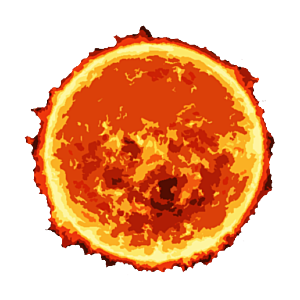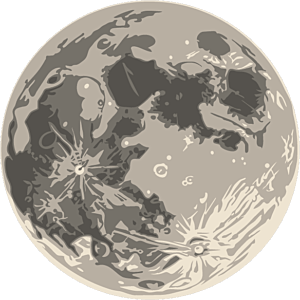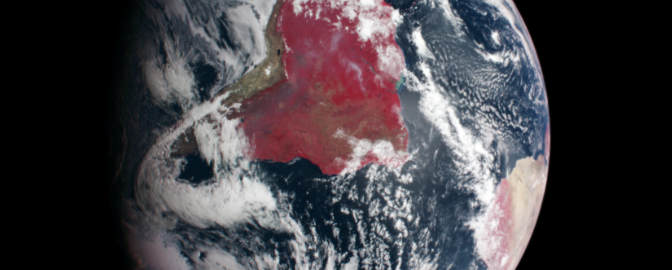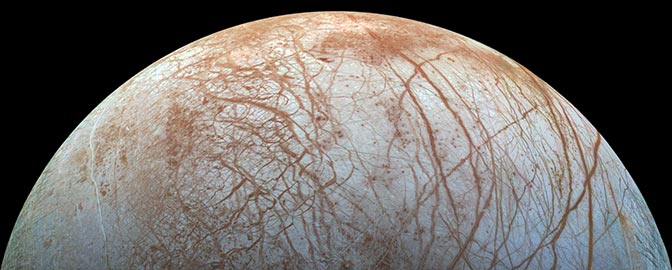The Downlink • Oct 31, 2025
Spooky scary solar storms
Space Snapshot

This new image from JWST shows NGC 6537, also known as the Red Spider Nebula. Planetary nebulae like this one form when Sun-like stars reach the end of their lives, expanding into cool red giants and then shedding their outer layers to reveal their white-hot cores. Image credit: ESA/Webb/NASA/CSA/J. H. Kastner (Rochester Institute of Technology).
Fact Worth Sharing

The Sun is expected to swallow Earth in 5 to 7.5 billion years when it expands into a red giant, but Earth will become uninhabitable due to the Sun's increasing brightness much sooner, in about 1 billion years.
Mission Briefings


A major solar storm could cause major trouble. With the growing congestion of satellites in Earth's orbit, the consequences of a huge solar storm could be serious. A recent simulation by the European Space Agency suggests that a significant storm could damage all satellites in orbit and heighten the risk of collisions. Pictured: A coronal mass ejection captured by NASA's Solar Dynamics Observatory. Image credit: NASA.

Mars ice might be the best place to look for life. Researchers from NASA Goddard and Penn State found that amino acids in bacteria could survive over 50 million years when frozen in pure ice under Mars-like conditions. Organic material in ice mixed with soil degraded much faster, suggesting Mars’ icy regions — not its rocks or clays — may be the best places to search for preserved life.

Astronomers have spotted rings forming around a Solar System body. Observations of Chiron taken by Brazil's Pico dos Dias Observatory in 2023 show signs of four rings around the icy object, as well as diffuse material that appears to be forming another ring. Chiron is a centaur (like a cross between a comet and an asteroid) approximately 200 kilometers (125 miles) in diameter, located between Saturn and Uranus.

A newly discovered asteroid is the second-fastest in the Solar System. Asteroid 2025 SC79 is only the second asteroid ever found inside Venus’ orbit. That close to the Sun, it also moves very quickly. Although not a threat to Earth, its discovery highlights the hidden population of potentially dangerous objects hidden in the Sun’s glare.
From The Planetary Society


The Cosmos is very much part of life on Earth. Historian Dagomar Degroot joins this week’s Planetary Radio to explore how shifting solar cycles, volcanic eruptions on Venus, Martian dust storms, and even mistaken sightings of lunar forests have influenced life, science, and society on Earth. Pictured: Aurorae like these, seen from the International Space Station, are caused by solar particles. Image credit: NASA/ISS Expedition 23.

Get to know ESCAPADE. The twin-spacecraft NASA mission to explore Mars’ magnetic field and atmosphere is due to launch as soon as Nov. 9, 2025. Learn more about how this unique mission could teach us about how the red planet became less habitable over time.

How can we build a new Moon program while slashing science funding? On a special episode of StarTalk, Planetary Society CEO Bill Nye and Chief of Space Policy Casey Dreier take over Neil deGrasse Tyson’s podcast to unpack the budget threat facing NASA Science and what it could mean for the future of exploration.

Take a voyage to the moons of the Solar System. The Planetary Society’s very own public education specialist, Kate Howells, is the author of “Moons: The Mysteries and Marvels of Our Solar System,” this month’s pick for the Society’s virtual book club. Planetary Society members can join Kate in a virtual Q&A on Monday, Nov. 3. This event is exclusive to members — if you haven’t joined already, now is the time!

You make vital research possible! For over 45 years, Planetary Society supporters have teamed up to fund breakthrough science and technology projects. Please help us reach our $70,000 goal by making a gift today to fund the next round of STEP grants. The more we raise now, the more we can support important scientific research in the future.
What's Up

In the early evening, look for yellowish Saturn in the east, moving across the sky throughout the night. The Moon will join Saturn on Nov. 2. Very bright Jupiter rises in the late evening in the east, and is high overhead before dawn. Super bright Venus is very low in the predawn east, but still visible if you have a clear view of the eastern horizon. On Nov. 5, check out the biggest supermoon of the year. The Moon will appear about 8% bigger and 16% brighter than an average full Moon. Find out what to look forward to seeing in November’s night skies.
Become a member today

We’re at an inflection point for space science. Budgets are being cut, scientists are leaving NASA, and the pipeline of future explorers is at risk. If you aren’t already a Planetary Society member, this is the moment to step up.
By becoming a member of The Planetary Society, you help keep pressure on Congress to safeguard NASA’s science programs and the missions that allow us to explore our Solar System and beyond.
Join us. Help protect the future of exploration.
Wow of the Week

The largest solar storm in recorded history was 1859’s Carrington Event, named after the astronomer who observed the solar flare behind it. The storm’s electromagnetic energy disrupted telegraph systems across Europe and North America, shocking operators and setting some stations on fire. Its power still inspires fear today, given our dependence on electronics. But the storm was also a spectacle, with brilliant auroras lighting much of the northern hemisphere. In 1865, American artist Frederic Edwin Church painted Aurora Borealis, perhaps inspired by the lights he saw in 1859. Image credit: Frederic Edwin Church.
Send us your artwork!
We love to feature space artwork in the Downlink. If you create any kind of space-related art, we invite you to send it to us by replying to any Downlink email or writing to [email protected]. Please let us know in your email if you’re a Planetary Society member!


 Explore Worlds
Explore Worlds Find Life
Find Life Defend Earth
Defend Earth

